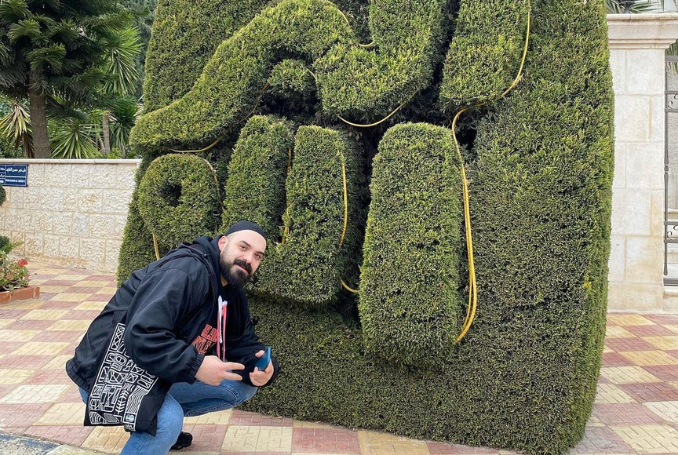Resistance, Music, And Existence Under Occupation

David Harrop
In year
Dance to music; What could be more fun? Rhythm and sweat are released and released, they feel more than they think. Horse racing can give you some freedom. The dance as a ritual can be resisted, but it is contagious with untrained energy.
Last year, I conducted a series of interviews with social work colleagues on the West Coast. As a social worker in the UK, I am particularly interested in the community-based approaches to social work that emerged during the war years.
It is the social work in the refugee camp that comes from the streets and can be considered as the main practice or in essence as social work.
In the tradition of Paulo Freire's social education, this is an anti-bureaucratic practice in which workers and volunteers work with political information and seek to create platforms for education and self-expression. (The Education of Oppressors, 1968)
Much of their work is research to create platforms for young people and explore their creativity in expressing their life stories and experiences.
Knowing the origins of a culture is not about restoring an ancient culture, but about seeing new writings designed to challenge and reflect contemporary practices of oppression. Along with the fact that their work should be different and capable of creating new social and political relations.
The colonial milieu of this music/film/art/fashion is still poignant and ubiquitous as young people reflect on their present and future amidst the horrors of 75 years of oppression.
Where is the time and place where social workers can help young people find ways to express themselves? What is the role of social animators who can provide the necessary platforms and resources for advice/support?
In this context, what is the tension around the aesthetic and political context? How can he shape and direct the engines of resistance around Palestine and the Diaspora?
I once met an author who was doing research on youth in the Dehshe refugee camp during the first intifada. During our conversation, she told me about her brother, the late musician Riyad Awad, who was one of the leading protesters during the first intifadas.
The Intifada created music, sometimes using the poetry of great Palestinian writers, that resonated widely in cafes and businesses. The recordings are often confiscated by Israelis as they are believed to provoke violent protests.
Riyad was arrested and tortured, although he was not charged. His work was recently re-released by the British label Majaz Project, which aims to preserve the Palestinian musical heritage alongside new trance, dancehall and techno, as well as Bedouin psychedelia.
During my stay in the West Bank, I was able to interview leaders of youth and street projects in the Dehishe and Ida refugee camps.
One person told me how, as a child, she was so traumatized by the attack in Dekhish that she temporarily lost her ability to speak. Participating in the youth group "Ibda Center", she joined the dance troupe "Dabke" and immersed herself in music and movement, freeing herself from trauma and now becoming a world-famous director.
Another social worker at the Ida camp spoke in desperation about 10-year-olds who told him they no longer wanted to live and wanted to die.
Recently, she and I sat in tears with my dear friend who works as a social worker and watched deaf children dance dabke among the ruins of an unfinished house in Doha.
Another colleague, who has a theater and puppet education, wants to involve people in artistic activities, and any protest is a beautiful movement, and he is a supporter of all movements as a beautiful protest.
Another Dhisheh project explained how they want to empower young women through art and how the group worked to create a rap song. It went viral when it was posted online and they believe these examples can be a source of liberation and expand the boundaries of gender consciousness.
Resistance can take various subtle and not-so-subtle forms. In addition to active protest and physical confrontation, there are many forms of protest that include reporting and critical writing, embodying and articulating the experience of protest, and trying to spark the imagination of others.
All of these initiatives create space for storytelling that gives voice and power to how to live better in the context of work, as well as providing platforms for doing so. Another young man reported high levels of depression and hopelessness. Any activity that provides space for self-expression builds resilience while protecting against mental health risks.
While contemporary Palestinian culture is multifaceted, building principles and protest theories certainly surround one core aesthetic. DNA is detected using traditional and modern hybridization.
There are bands like 47Soul who have brought a dabke vibe to the 21st century with imitation moves designed to play energetic electronic dance music from cafes and car radios and encourage young people to rally around the system.
Many young Palestinians inspired by the techno scene seem to want to move to Berlin, where they feel they can immerse themselves in the culture of film, music, art, etc. and take their DNA with them.
There has been much grief recently following the sudden death of Odai Masri, a Palestinian techno DJ and producer who used music as a tool of solidarity and protest. He pioneered the annual EXIST Festival, which aims to create cooperative links between the creative Palestinian arts community and its international partners in Ramallah and Berlin.
Her vast global family is united by her use of art for meaningful environmental impact and her involvement in the fight against colonialism in Palestine and beyond.


